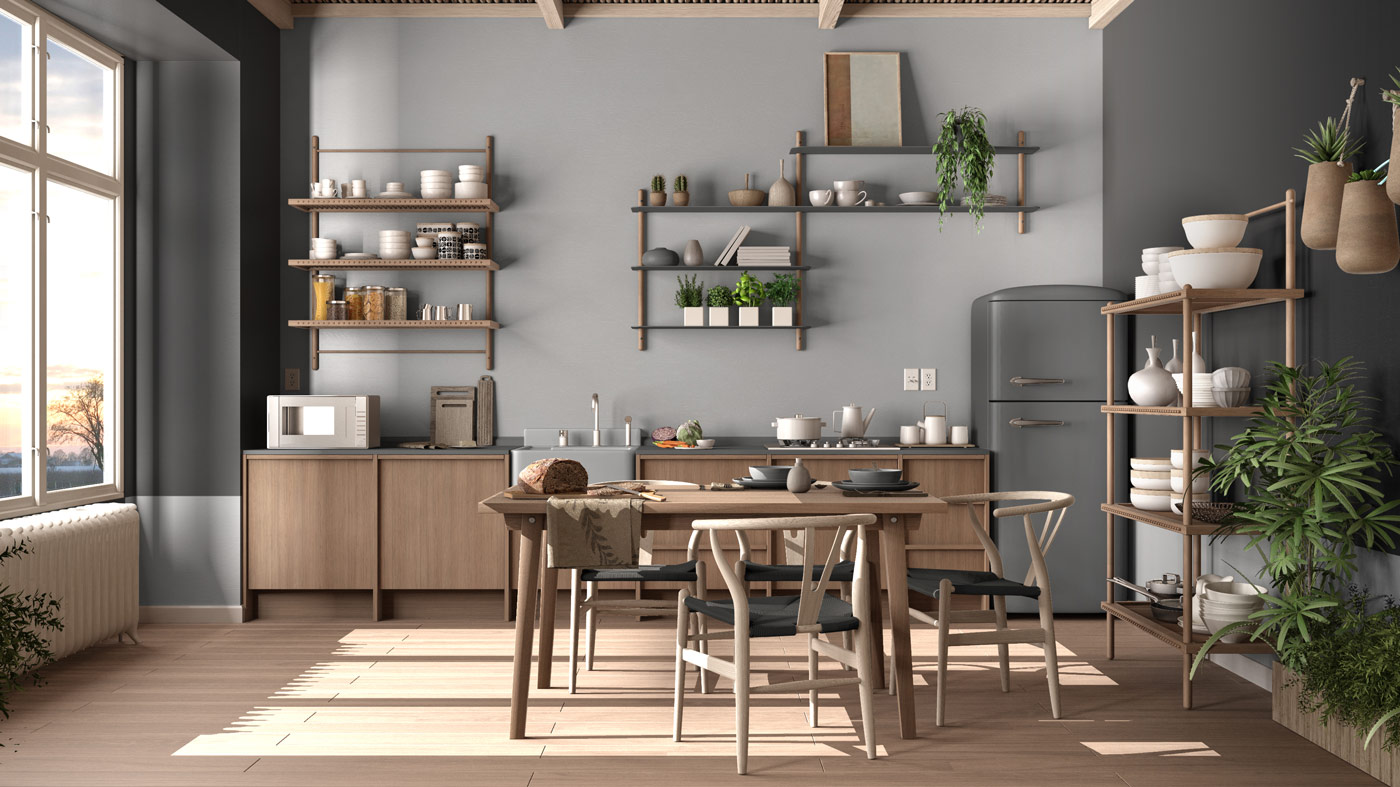 The concept of energy efficiency has been around for quite a few decades now, but it has only recently caught momentum. With global warming and depletion of our natural resources, we have become acutely aware of an urgent need to repurpose our lifestyle to adopt a more sustainable mode of living. This has resulted in a massive shift in the real estate industry, as people are becoming increasingly interested in purchasing a household that is eco-friendly and energy-efficient.
The concept of energy efficiency has been around for quite a few decades now, but it has only recently caught momentum. With global warming and depletion of our natural resources, we have become acutely aware of an urgent need to repurpose our lifestyle to adopt a more sustainable mode of living. This has resulted in a massive shift in the real estate industry, as people are becoming increasingly interested in purchasing a household that is eco-friendly and energy-efficient.
But what do we mean when we say energy efficient? To put it in simple terms, energy efficiency is using lesser energy to generate the same amount of energy as before. In households, this is possible by reducing the energy losses that occur by taking certain measures that focus on optimising insulation, ventilation, air-tightness, water-conservation, smart appliances, etc.
So if you are considering building, or even buying, an energy-efficient home, there are a lot of things that you need to account for before you do.
What to Look for in an Energy-Efficient Home?
Insulation
Inadequate insulation can greatly undermine the energy efficiency of your home. Having a proper insulation system is a great way to minimise energy losses and increase cost savings. If your home is lacking in this regard, there are several areas where you might need to introduce insulation that we will discuss later on in this article.
Lighting
A percentage of a building’s energy goes into lighting. If you’re aspiring to decrease the cost and energy that goes into this, you might want to stay away from traditional incandescent bulbs, and explore other options like LEDs, halogen incandescents and compact fluorescent lamps (CFLs). These are a little costlier to buy than your traditional bulbs but energy-efficient and cheaper in the long run.
Heating and Cooling Systems
Some of the major energy expenditures of a household go into its heating and cooling. Having energy-efficient and cost-effective heating and cooling systems is an ideal way to reduce carbon footprint, increase cost savings, and create an environment-friendly infrastructure. For this purpose, you could consider installing heat pumps as an alternative to both air conditioners and furnaces.
Upgrading to an Energy-Efficient Home
Before you can upgrade your home to give it a more energy-efficient construction, you need carefully evaluate which areas need to be reworked, and what kind of reworking they need.
Insulating Your Home
One of the aspects of your home that you can upgrade is its insulation. We have already discussed its importance in optimising the energy efficiency of a house, so let’s go on to see which areas you might want to look into for that matter.
1. Cavity Walls
A cavity wall is a structure that is hollow at the centre. It can be better described as two walls with a space between them. Your house is very likely to have cavity walls if it was built after the year 1920, in which case it would be a good idea to get them insulated.
This can be done by injecting an insulating material, like mineral wool or polystyrene beads, into the cavity, and sealing the holes in the wall with a material like cement. Since this is quite a technical job, it would be advisable to get a professional to do it for you.
2. Solid Wall Insulation
If your house was built before the 1920s, chances are that it has solid walls. These can be insulated either externally, or internally. For internal insulation, you could either have rigid insulation boards attached to the wall or build a stud wall filled with insulation material.
The process can be very extensive, compared to external insulation. In external insulation, the walls are covered with the insulation material, followed by a unique render or cladding.
3. Open Loft Insulation
Another great way of increasing the energy efficiency of your home is by insulating the loft, attic, or roof. Poor insulation of these areas may result in up to 25% of your household’s energy losses. You have a lot of flexibility when it comes to insulating the loft. Depending on whether you want to use your loft for storage, or as a living space, you can go with different types of insulation such as cold roof insulation and warm roof insulation respectively.
4. Draughts
No house can be energy efficient without draught-proofing. Draughts allow for unwanted and uncontrolled energy losses through gaps and spaces in the construction of the building. To deal with draughts, you need to identify all the areas that facilitate draughts and seal them off appropriately. There is a range of products in the market that allow you to draught-proof your doors, windows, floorings, etc.
5. Suspended Timber Floor Insulation
A lot of older homes have suspended timber flooring in them. This flooring can make way for large draughts that become a source of energy loss throughout the years, and result in higher utility bills. If you are looking for a permanent solution for this issue, then you should consider insulating the flooring from underneath, or remove the floorboards, insulate them, and reinstall them. Obviously the construction method of you house will change the variables here.
Upgrading Your Windows
Installing energy-efficient windows in your home is a great way to work towards an environment-friendly household. Energy-efficient glazing on the windows can minimise draughts, heat losses, and erase cold spots. This glazing also offers a level of soundproofing and reduces the buildup of condensation.
Energy-efficient windows include two to three glass panes stacked as a single unit with gaps in between. The surrounding frame of these windows is usually made of wood or unplasticised polyvinyl chloride (uPVC). The two types of these windows than can save energy and save money are:
1. Double glazed windows
These comprise of two glass panes with a gap of usually 16mm in between them.
2. Triple glazed windows
Triple glazed windows, as the name suggests, are made of three glass panes with a total of two gaps between them.
Upgrading Your Doors
The doors of your home can allow for a great deal of energy loss through conduction, air-leakage, and draughts if it is improperly insulated, or of poor construction. If your house is relatively old, then you should start considering your options with new doors that have better fitting and insulation to minimise these losses.
Choose Energy Efficient Appliances
The energy utilised by your everyday appliances should never be ignored. Before you purchase an appliance or an electronic device, you must be careful to choose one that has a comparatively low energy consumption in order to decrease your energy expenditure and increase cost savings.
Luckily for you, there is a wide range of energy-efficient appliances and gadgets in the market for you to evaluate and choose from. You now have energy-efficient dishwashers that use minimal water and energy, heat pump condensing dryers for your clothes, induction stovetops, and more. Selecting energy-efficient electronics and appliances is another smart way to improve the overall efficiency of your home, and you should start looking into your options.
Most houses need to think about their heat recovery strategy, and heatings systems. Also thinking about saving on energy bills by being more efficient with the home s energy use and hot water, and carbon emissions. Also check if you can use renewable energy and make use of the green homes grant scheme. The energy savings trust is a good resource.
Solar Panels
Everything about solar panels points towards increased efficiency, eco-friendly and sustainable, but before there is a lot that you need to know before you should install them. First of all, you need to consider your location and the climate – whether or not your area gets sufficient sunlight for the solar panels to harness.
You will need to consider the surrounding buildings, the design of the house, and of course whether you have the budget for this sort of construction. Installing solar panels in your household can be very expensive, and the payback period is pretty long, so you should probably look into optimising your household through other means and methods before you settle on this one.
Solar Tempering
Solar tempering is a very smart and cost-effective method to cut back on energy expenditure and decrease utility bills. It involves making use of the sun to harness added light to minimise the costs incurred by lighting.
In addition to this, optimal shading will allow for solar heating in winters, while preventing excess heat from entering during the summertime. While this is a very environment-friendly and cost-effective technique to increase the energy efficiency of your home, it can be quite technical and demanding in terms of design and layout.
Conclusion
Depending on your budget, location, and building’s design, you would definitely be more aware of the modifications you need to make in order to upgrade your household into an environment-friendly, cost-effective, and energy-efficient one.
You should never shy away from investing a little extra money in sustainable and environmentally friendly products because these almost always offer great economic and health benefits in the long-term. Remember, you’re only going to be on this planet as long as you’re going to have one to be on.
It’s about time we start reducing our harmful impact on the environment and start focusing on building more sustainable and eco-friendly systems.
Confused about the Eco-Friendly Terminology and Jargon?(Opens in a new browser tab)
Simple ways to make your home more efficient and save money each year(Opens in a new browser tab)
Condensation in Homes – Causes, dangers and what you can do about it(Opens in a new browser tab)

Hi! I’m Chris, the founder of The Organic & Natural Paint Co, and I’m focused on the education and promotion of natural non toxic alternatives to chemical laden everyday products that we just take for granted. We have a choice, and I want to raise awareness of alternative products that don’t actually harm us!
This company is my way of pushing the awareness of better indoor air quality, something that I am personally passionate about due to my own children’s breathing medical conditions. I just couldn’t paint with big brand standard petrochemical paint any longer and wanted another solution.
Read more: About me
Twitter: NaturalPaintCo
Instagram: cleanairclubofficial

